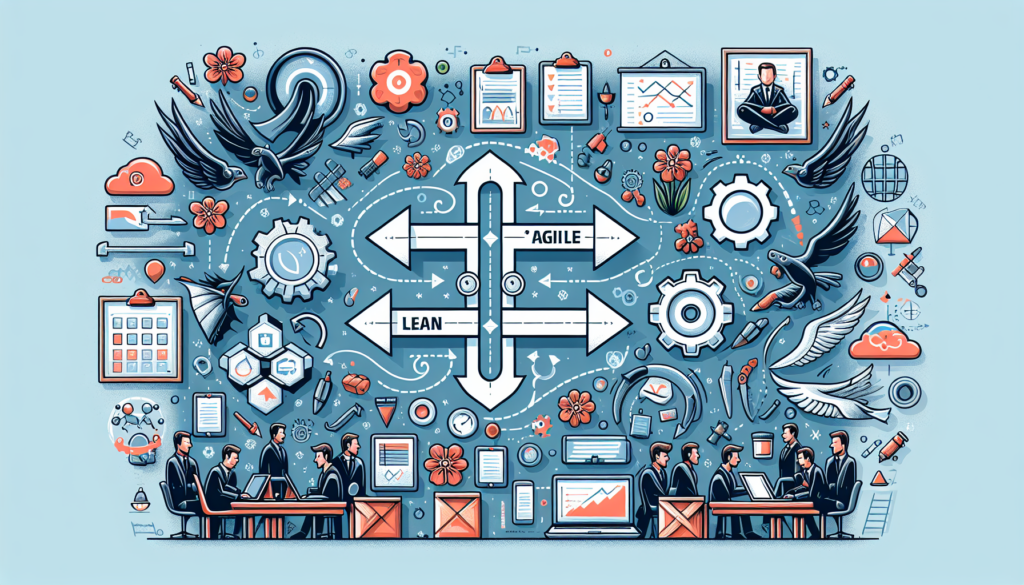In an ever-changing business landscape that is moving at unprecedented speeds, agile and lean methodologies have become two of the most influential management and development philosophies of recent decades. However, although Agile and Lean are often spoken of in the same breath, there are substantial differences between them that are crucial to understand for effective application. This article provides a detailed comparison of these two approaches, identifying convergences, divergences, and how they can interweave to strengthen processes and outcomes in organizations seeking excellence in a dynamic and competitive environment.
Similarities between Agile and Lean
Agile is an umbrella term that encompasses various frameworks and methodologies focused on iterative development, where requirements and solutions evolve through the collaboration of cross-functional teams. It is prominent in the software industry, where methods such as Scrum, Kanban, and Extreme Programming (XP) have revolutionized the way digital products and services are delivered.
On the other hand, Lean originated from the Toyota Production System and seeks to maximize value for the customer while minimizing waste. Although initially focused on manufacturing, Lean has permeated other sectors, including software development and services.
Both philosophies share several principles, such as:
- Customer value focus: Both Agile and Lean start from understanding and satisfying customer needs.
- Continuous improvement: There is a constant quest for the perfection of processes and products.
- Visual management: The use of boards and graphical tools to track progress and workflows.
- Flexibility and adaptability: The ability to respond to changes and strategically adjust plans.
Key Differences
Despite their similarities, the differences between Agile and Lean are significant and are reflected in their primary applications and underlying philosophies:
- Objectives: While Agile focuses on adaptability and incremental development to handle complexity and changes, Lean places more emphasis on efficiency and removing activities that do not add value.
- Culture and mindset: Agile fosters a culture of team empowerment and close collaboration with the customer, whereas Lean emphasizes a culture of systematic waste reduction and operational efficacy.
- Implementation approach: Agile tends to be implemented through sprints and frequent feedback cycles, while Lean involves mapping the value stream and a continuous search to reduce cycle times.
Combining Agile and Lean
Integrating Agile and Lean can provide a more robust framework that leverages the strengths of both philosophies. To do this, it is crucial to understand how they complement each other in practice, always keeping the customer and value delivery as the central core.
- Complementarity in processes: Agile’s iterative and incremental approach can benefit from Lean’s process mapping practices and elimination of non-value-adding activities.
- Organizational culture: Integrating Agile’s culture of empowerment and collaboration with Lean’s efficiency and focus on indicators can lead to improved team motivation and productivity.
- Resource optimization: Agile’s flexibility is enhanced with Lean’s focus on efficiency, helping to optimize resources and timing.
Case Studies
Case studies have documented how the combination of Agile and Lean can lead to the transformation of business processes:
- Lean-Agile software development: In the technology sector, the application of Lean principles to Agile has resulted in greater predictability and quality of software while improving the ability to adapt to changes.
- Organizational transformation: Organizations that have adopted a Lean approach to reshape their culture and then implemented Agile practices have reported a substantial improvement in teamwork and project delivery.
- Manufacturing: Manufacturing companies that have combined Lean for operational efficiency with Agile for new product development have been able to accelerate their innovation process and market response.
Future Directions and Innovations
Looking to the future, the convergence of Agile and Lean promises to evolve to embrace digital transformation and artificial intelligence for even higher levels of customization and efficiency. Organizations that can successfully navigate the intersection of these methodologies will be better equipped to compete in increasingly volatile markets.
The complementarity of Agile and Lean is not a one-size-fits-all solution, and its correct implementation requires a deep understanding of both philosophies. However, as has been shown, the resulting synergy can be the key differentiator for organizations seeking to lead in innovation and operational excellence.

